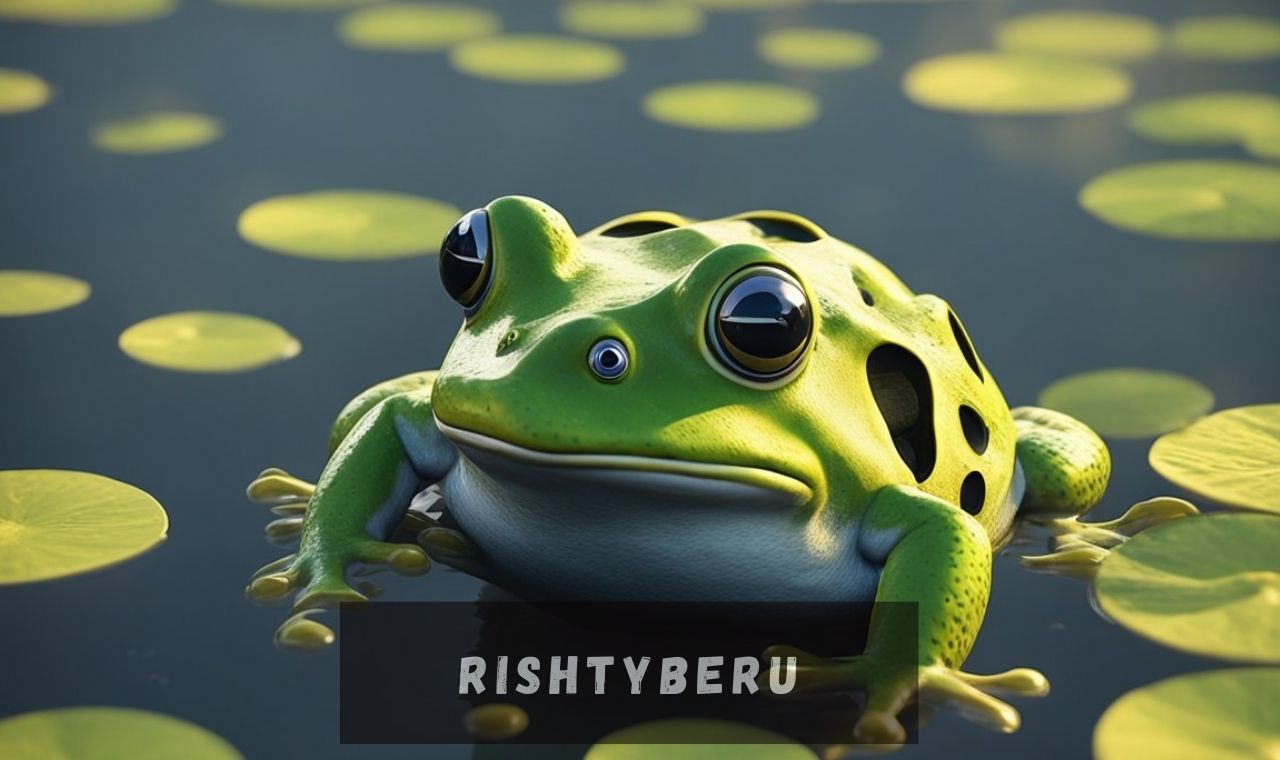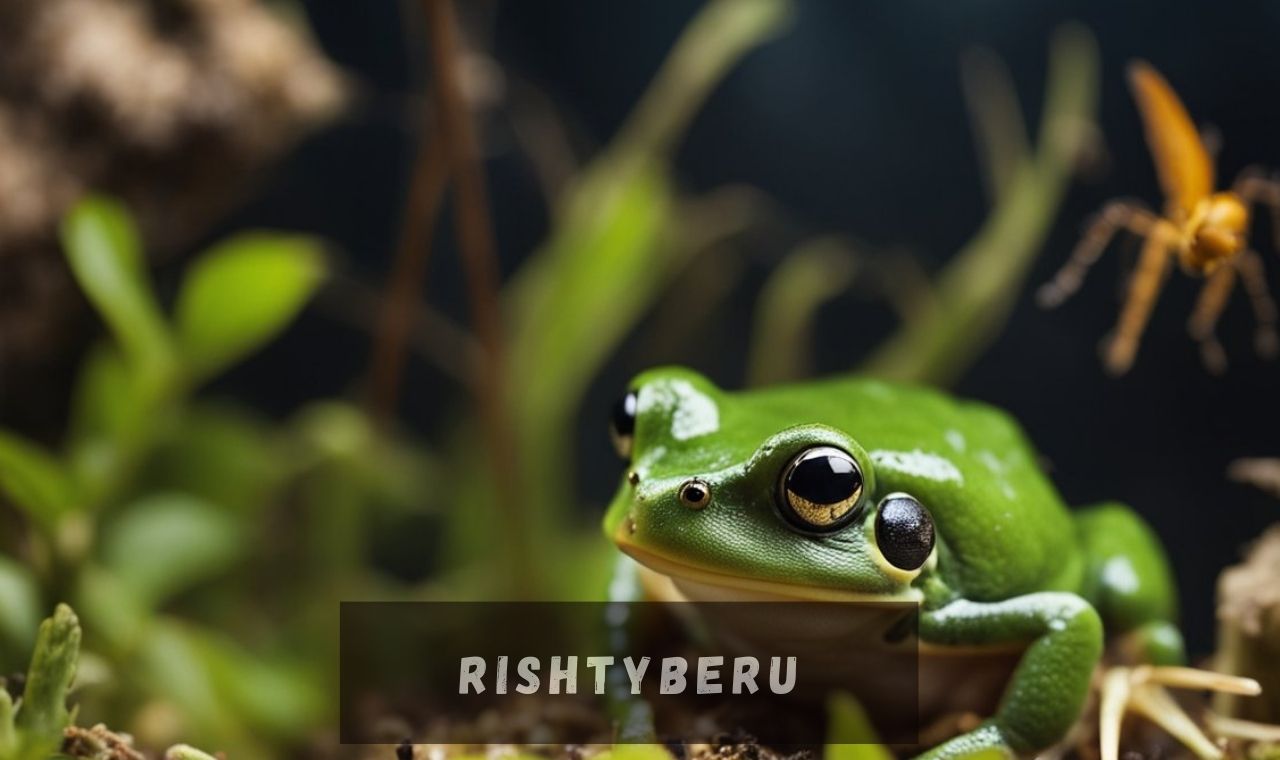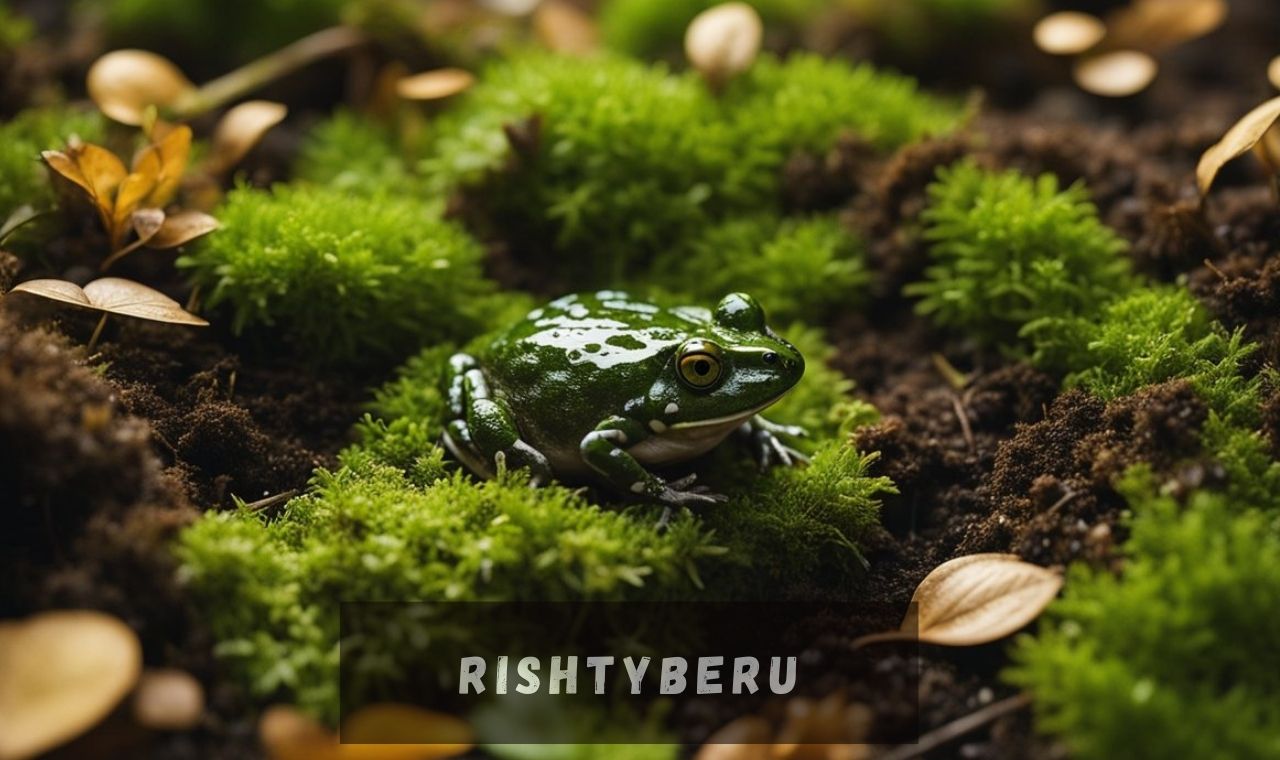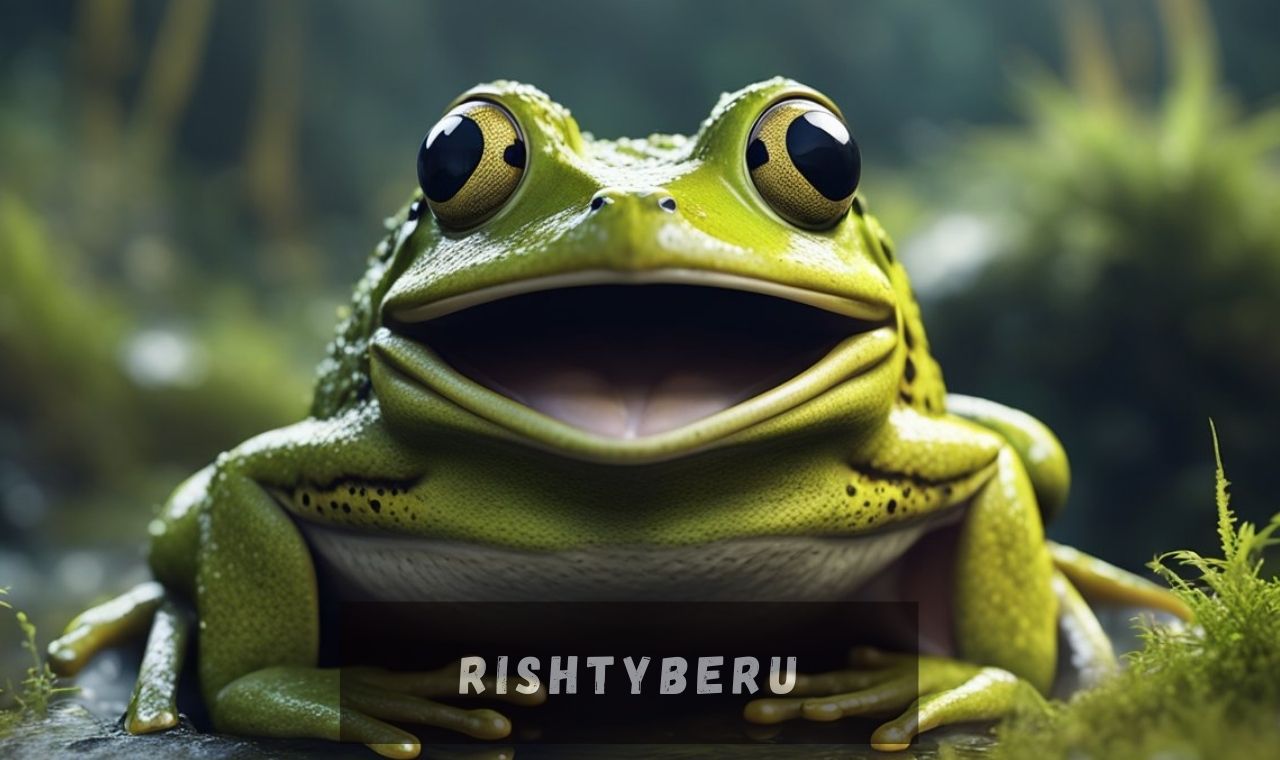Amphibians, known for their remarkable adaptability between land and water, showcase an array of remarkable traits, and Pacman frogs are no exception. A recurring inquiry among animal enthusiasts revolves around the swimming capabilities of these intriguing creatures: Can Pacman Frogs Really Swim? This query sparks debates, as observers often spot these terrestrial amphibians submerged in water, prompting a closer examination of their aquatic prowess. This article delves into the peculiar aquatic abilities of Pacman frogs, offering a comprehensive analysis of their lifestyle to determine whether they indeed possess any swimming capability.
Unveiling the Pacman Frog’s Amphibian Lifestyle
For any naturalist or hobbyist fascinated by amphibians, a thorough comprehension of their subjects is paramount. Among these captivating creatures, the Pacman frog stands out with its distinctive lifestyle. Named after the iconic video game character, Pacman frogs boast a rounded body shape and an oversized mouth, resembling their namesake.
Scientifically classified as Ceratophrys, Pacman frogs belong to the Ceratophryidae family. Renowned for their striking appearance, they exhibit a plethora of vibrant colors and patterns, varying among different species.
However, appearances only scratch the surface of understanding these captivating amphibians. To unravel the mystery surrounding their aquatic abilities, it’s essential to examine their lifestyle, particularly their relationship with water.
While predominantly terrestrial, Pacman frogs are opportunistic predators, adopting a “sit and wait” strategy to ambush their prey. Despite their terrestrial nature, one should not underestimate their underwater mobility or potential for swimming.
These amphibians thrive in moist environments resembling their natural habitat, often including a water feature in their terrariums. However, the water depth must be shallow enough to accommodate their terrestrial nature.
Water serves a vital role in the survival of Pacman frogs, facilitating essential functions such as hydration and thermoregulation. In their native habitats, spanning from the tropical forests of South America to less humid regions, these frogs utilize bodies of water for cooling off, soaking, hydration, and even breeding.
Next, we scrutinize common misconceptions surrounding the swimming behavior of Pacman frogs.
Dispelling Myths: The Swimming Capabilities of Pacman Frogs
Understanding the aquatic behavior of frogs requires us to avoid generalizations. A pertinent question often arises: Do Pacman Frogs Engage in Swimming? While seemingly straightforward, the answer may challenge conventional perceptions of amphibian behavior.
The typical notion of swimming—a coordinated propulsion through water—is not entirely applicable to Pacman frogs. Their unique physiology, characterized by short limbs, diverges from the conventional image of swimming. Therefore, redefining the concept of swimming is imperative when analyzing the behavior of these amphibians.
By examining relevant research and observations, it becomes apparent that Pacman frogs’ interactions with water deviate from conventional swimming patterns. The confusion surrounding their swimming abilities likely stems from misconceptions rather than reality. By reevaluating our understanding of swimming and relying on credible evidence, we can gain a clearer insight into the aquatic behavior of Pacman frogs.
Understanding the Aquatic Abilities of Pacman Frogs

Long classified as creatures primarily rooted in terrestrial realms, the investigation into the Pacman Frog’s prowess in water has intrigued scientists and enthusiasts alike. Despite their apparent terrestrial nature, the Pacman Frog reveals surprising adaptations to aquatic environments, prompting a deeper inquiry into their biological makeup and behaviors, particularly their swimming capabilities.
Anatomy Adaptations for Aquatic Life
At first glance, the physical features of Pacman Frogs might suggest limited interaction with water. Their diminutive limbs, compact bodies, and lack of webbed feet commonly found in aquatic species seemingly affirm their terrestrial disposition. However, a closer examination uncovers the significance of their skin in water regulation. Despite lacking external features conducive to swimming, their semi-permeable skin enables efficient absorption and retention of water, vital for survival in environments where standing water is scarce.
Renowned herpetologist Dr. Susan Wright elaborates, “Contrary to popular belief, Pacman frogs aren’t adept swimmers due to their physical structure. Instead, they are adapted for navigating moist terrestrial habitats.”
Behavioral Insights into Aquatic Engagement
Delving into the behavioral patterns of Pacman Frogs sheds light on their relationship with water. These nocturnal creatures exhibit a propensity for burrowing and concealment during daylight hours, minimizing water loss through evaporation. They demonstrate a preference for maintaining moisture, frequently engaging in ‘soaking’ behaviors, where they submerge themselves in shallow water, absorbing it through their skin and cloaca.
Understanding these behaviors provides valuable insight into their survival strategies in water-scarce environments. However, questions persist regarding the Pacman Frog’s swimming prowess. In the subsequent sections, we will further unravel their aquatic capabilities and demystify their aquatic skills.
| Pacman Frog Physical Attributes | Relation to Water Interaction |
|---|---|
| Short limbs | Limited Swimming Capability |
| Compact Body | Designed for Ground-based Maneuvering |
| Absence of Webbed Feet | Inefficient for Swimming |
| Semi-permeable Skin | Allows for Water Absorption and Retention |
Exploring Pacman Frog Habitat: Clues to Their Aquatic Skills
The natural surroundings of Pacman frogs offer valuable insights into their swimming abilities. Originating from the lush rainforests of South America, these amphibians primarily inhabit terrestrial environments but are often spotted near stagnant water bodies like marshes, swamps, and ponds. Water holds a crucial role in their life cycle and daily routines within these habitats.
Typically, Pacman frogs dwell in damp, humid climates where water is abundant. In such settings, water serves multiple purposes, acting as a shelter from predators, aiding in hunting, and facilitating breeding.
Given the prevalence of water in their habitat, it’s reasonable to speculate on the development of aquatic skills among Pacman frogs. However, the extent of their swimming prowess remains debatable, influenced by factors like morphology, behavior, and adaptations to their environment.
The inquiry into whether Pacman frogs possess swimming abilities akin to other amphibians or merely utilize water functionally is complex yet intriguing.
Examining their interactions with water in the wild and the resultant behavioral patterns provides crucial insights into their aquatic potential.
In subsequent sections, we’ll delve deeper into observed behaviors of Pacman frogs in water to ascertain their swimming capabilities definitively.
Observing Pacman Frogs in Aquatic Environments: A Unique Approach
One persistent query among amphibian enthusiasts and researchers alike revolves around the swimming prowess of Pacman frogs. To explore this question further, we must closely analyze expert and hobbyist observations shedding light on how these frogs behave when submerged.
Unique Aquatic Skills of Pacman Frogs
Studies reveal that rather than exhibiting conventional swimming techniques, Pacman frogs demonstrate a distinct approach tailored to their specific abilities.
Their movements in water resemble more of a scrambling or hopping motion, powered by strong, rhythmic hind limb propulsion.
When submerged, Pacman frogs tend to stick close to the bottom, utilizing their limbs to navigate across the substrate.
Despite lacking traditional swimming techniques, they demonstrate buoyancy control, maneuvering comfortably and efficiently in aquatic environments.
These observations underscore the unique aquatic behaviors of Pacman frogs, highlighting a swimming style distinct to their species, which deviates from conventional norms.
Unlocking the Mysteries of Pacman Frogs in Still Water Environments
Exploring the dynamics between Pacman frogs and tranquil water habitats sheds light on their aquatic behaviors. Typically dwelling in serene locales such as ponds and calm river bends, these amphibians present intriguing swimming patterns.
Delving into the serene realms of ponds or the tranquil corners of rivers, one observes Pacman frogs navigating the water’s surface with a captivating blend of floating, walking, and hopping. Contrary to the vigorous strokes associated with swimming, their movements unfold gradually and purposefully. Harnessing water’s inherent buoyancy, the Pacman frog’s aquatic locomotion resembles a controlled form of floating or bobbing.
In essence, the Pacman frog’s interaction with water is a nuanced affair. Their habitat and inherent instincts shape their aquatic prowess, manifesting in a distinctive mode of underwater locomotion. While they don’t swim conventionally, their adeptness at navigating underwater realms through walking or hopping is a testament to their semi-aquatic lifestyle.
Clarifying Pacman Frog Swimming Behavior: A Deep Dive
In the realm of amphibian behavior, inquiries often arise about the aquatic capabilities of Pacman frogs, given their dual habitat. Yet, answers to these queries defy simple categorization.
“Notably, Pacman frogs transcend mere hydration in their aquatic endeavors. While they may not exhibit traditional swimming, their underwater movements are tailored to their semi-aquatic existence,” remarks an unnamed herpetologist.
Pacman frogs eschew conventional swimming in favor of submerged ambulation, utilizing robust hind limbs to propel themselves across substrates. Their flattened physique minimizes drag, facilitating seamless movement underwater.
Fluttering leg motions while submerged aren’t indicative of swimming but rather serve to maintain stability. Despite lacking buoyancy akin to fish, they adeptly navigate water using their powerful hind limbs.
When threatened, Pacman frogs display frenetic underwater movements, employing rapid paddling reminiscent of a sprint rather than a swim.
Unfortunately, misconceptions surrounding their swimming prowess have led to lapses in captive care, yielding dire consequences. It’s imperative that enthusiasts and caretakers grasp the intricacies of Pacman frog behavior underwater to ensure their welfare.
| Behavior | Navigation Underwater |
|---|---|
| Moving in Still Water | Pacman frogs are most adept at moving in still water environments like ponds and swamps, where they spend most of their time. |
| Floating | While Pacman frogs can float using their hind legs to stabilize themselves, it should not be confused with swimming. |
| Escaping Threats | Pacman frogs use water for cover and will duck under to avoid predators, moving briskly in short bursts to evade capture. |
Exploring Pacman Frog Aquatic Abilities: Insights from Science
Diving into the world of Pacman frogs, one might ponder: Can they truly swim? Science weighs in on the underwater prowess of these intriguing amphibians. Before delving into their aquatic domain, let’s decipher how science discerns between their movements on land and in water.
Underwater Locomotion vs. Land Mobility
When it comes to water, Pacman frogs demonstrate a unique style of movement more akin to walking or hopping than traditional swimming. Their compact physique, short limbs, and lack of webbed feet contribute to this distinctive method. Conversely, on land, they adopt a sit-and-wait approach, remaining motionless until prey crosses their path. Hence, their swimming ability serves more as a survival mechanism rather than a primary means of locomotion.
Survival Strategies in Water
Despite their limited swimming capabilities, Pacman frogs exhibit remarkable survival tactics when submerged. They can endure extended periods underwater without drowning by remaining still and relying on cutaneous respiration, where they breathe through their skin. Additionally, during dry spells, these amphibians burrow underground, creating a protective cocoon of shed skin and mucus to prevent dehydration. Their relationship with water underscores their adaptability to diverse environments.
Unveiling Pacman Frogs’ Aquatic Moments
To grasp the aquatic nature of Pacman frogs, we must closely examine their lifestyle. Their interaction with water, essential for activities like breeding, hunting, and sheltering, sheds light on their swimming abilities.
Observing Pacman Frogs’ Water Behavior
Pacman frogs exhibit intriguing behaviors in water. They often partially immerse themselves, keeping their nostrils above the surface for breathing ease. They also show a preference for wet environments, frequently lingering in muddy patches. While these actions may not classify as traditional swimming, they emphasize the significance of water in their daily lives.
Clarifying Misconceptions
The question of Pacman frogs’ swimming abilities sparks debates. While some believe their amphibious nature implies adept swimming skills, others argue that they primarily submerge without exhibiting typical swimming behaviors.
In Conclusion
While Pacman frogs closely interact with water, their swimming abilities are modest compared to other amphibians. Although they can navigate short distances underwater, this doesn’t categorize them as proficient swimmers. Understanding their nuanced relationship with water is key to appreciating the diverse adaptations of these fascinating creatures.
Exploring Pacman Frogs’ Aquatic Abilities: Insights from Experts
Delving into the swimming prowess of pacman frogs reveals a multifaceted inquiry, with varying viewpoints stemming from propositions and assumptions. Thankfully, specialists within this domain have dedicated their professional lives to unraveling the complexities of Pacman Frogs’ Swimming Behavior and Aquatic Skills.
Through careful analysis of expert observations and insights, our goal is to deepen your understanding of a fundamental query – Can Pacman Frogs Swim? In the ensuing discussions, we consolidate and synthesize expert knowledge, providing a comprehensive overview of these amphibians’ swimming capabilities.
Renowned herpetologist remarks, “Pacman frogs demonstrate proficiency in navigating muddy substrates beneath shallow waters. Their mode of movement resembles more of a walk or crawl utilizing their robust and muscular legs rather than conventional swimming.”
Matias Bergallo, an authority in zoology and tropical biology, has conducted extensive research on pacman frogs. He posits, “Pacman frogs employ a unique hydration strategy, primarily absorbing water through their skin to maintain moisture levels essential for survival. However, this mechanism does not necessarily translate to adept swimming skills.”
Refer to the table below for a concise summary of key expert perspectives on pacman frogs’ aquatic abilities:
| Expert Perspective | Summary |
|---|---|
| Herpetologist | Pacman frogs maneuver adeptly in muddy substrates underwater, utilizing their legs for movement rather than conventional swimming. |
| Matias Bergallo | Pacman frogs maintain hydration through skin absorption but may not possess inherent swimming prowess despite their amphibious nature. |
Diving into the intricate realm of Pacman frogs reveals a fascinating adaptation to aquatic environments. Their adeptness in navigating shallow waters and retaining moisture showcases an evolutionary triumph. However, traditional notions of swimming may not precisely apply to these amphibians, particularly in deeper waters.
As we delve deeper into the enigmatic world of Pacman frogs, each revelation contributes to a more precise understanding of their unique ecosystem.
Deciphering the Amphibious Lifestyle of Pacman Frogs
Throughout our exploration, we’ve uncovered the amphibious tendencies of Pacman frogs and how their natural habitat shapes their interactions with water. While water undoubtedly holds significance in their environment, it’s evident that their underwater locomotion differs from conventional swimming, resembling more of a submerged walk or hop.
Contemplating Pacman Frogs’ Aquatic Affinity
Upon reflection, it becomes clear that Pacman frogs possess a nuanced relationship with water. While they demonstrate survival skills underwater, their movements seldom align with traditional swimming patterns. A comprehensive comprehension of these creatures’ behaviors within their habitat provides valuable insight into the likelihood of Pacman frogs engaging in swimming activities.
In conclusion, continuous scientific inquiry into this species is imperative. By further exploring the swimming capabilities and water dynamics of Pacman frogs, we uncover the remarkable adaptability of these resilient creatures, shedding light on their multifaceted survival strategies.



